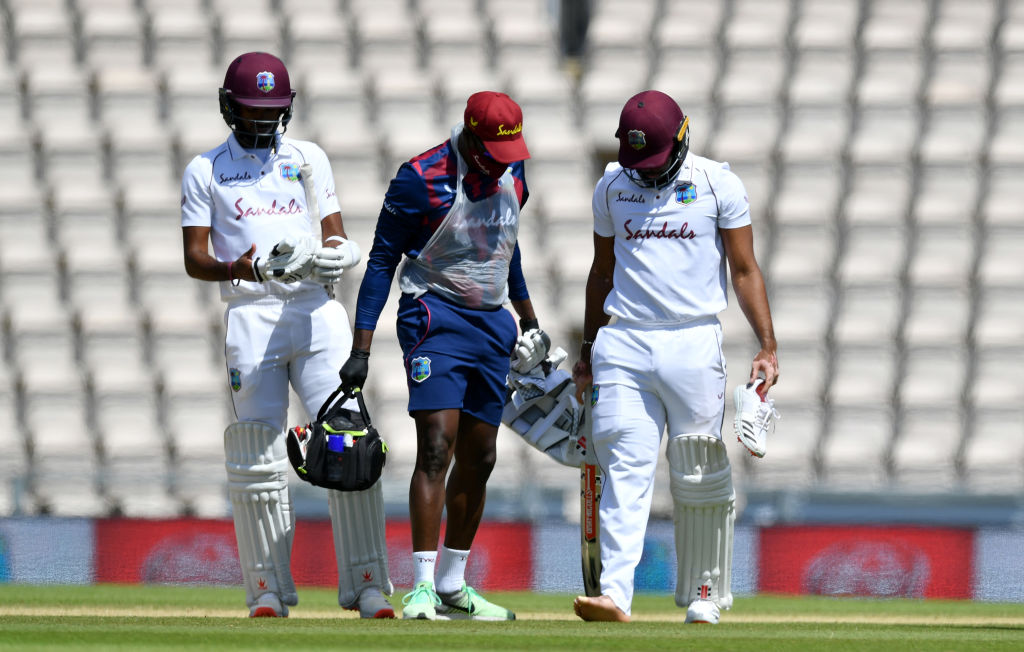Will Cricket house a football-like ‘substitution rule’
Day 1 of the third and deciding Test at Old Trafford in Manchester posed an important question for the return of cricketing action following COVID-19, can cricket house a similar substitution rule as football? Or is it too big an ask, which could only dramatically change the course of the game?

The dilemma of constant rule-changes on the basis of dramatic events has always been part of cricket’s long-standing rule book. Following the 2019 World Cup final, which was decided on the back of a weird boundary-count rule, the governing body has taken that absurd rule down with an additional over succeeding the super over. But there has been one thing that cricket has not experimented too much regarding substitutions. In the past, during the Summer of 2005, ICC came up with a bizarre rule called ‘super-sub,’ which did not leave a long-lasting impression on the game, owing to its similarity with the football-style rule.
However, there the rule suggested that the captains must decide the player, who would become a super-sub during the encounter, in a football-esque fashion that does not pertain itself to injuries. That failed and the major reason behind its failure was the side which won the toss would always be favourites to getting an unfair advantage due to the rules in play. If the side wins the toss and elects to bat first, the super-sub will automatically become a bowler and vice versa.
After six months, the concept moved on and never made its way back into cricket. However, owing to the coronavirus impact on the cricketing world, a few comments have suggested that cricket could have a substitute for injury-driven cases in Test cricket. Post COVID-19, cricket was back again with England and West Indies showing us life during the pandemic, including how bowlers could go flat on the back of not having saliva to use for reverse swing.
After Shannon Gabriel walked off the field on Day 1 of the third Test, it left another question unanswered, can cricket finally get such a rule in play?
Clearly from the team’s perspective, here West Indies would have got a blessing-in-disguise to replace the injured bowler for a like-to-like replacement midway in the Test match. While Gabriel returned back to the field relatively quickly, this might be one of the biggest talking points from the sport returning. What if Gabriel could not return for the rest of the days of this Test match, what would have West Indies done? Well, under the current set of rules clearly they could have done nothing owing to the restrictions placed for the substitutes, who are nothing more than just fielders. They cannot bowl and definitely cannot bat and under such circumstances, the team is crippled with a disadvantage. Having such a rule in place could clearly let the sport develop on the same levels of football.
But remember cricket is a different sport, with rules starkly different from the other ones and every minute decisions having a major impact on the proceedings over either overs of play or days of action. On the same wavelength, even this rule could have a major impact on the game, changing it dramatically because it can be misused more than it can be used. In football, it doesn’t matter, even the smallest of bid whether it is a forced change or an unforced one with the coaches having the flexibility to change the course of the game with their decision.
Even more so after COVID-19, with major leagues allowed as much as four-substitutions during a fixture against the pre-existing three. Cricket, however, only offers three kinds of solution to an injury and in the majority of the cases, only one. If a bowler gets himself off the pitch, with an injury a fielder can only replace him whilst fielding without taking part during the batting or the bowling proceedings, making it tough and incredibly unlucky for the side facing that issue.
Why wouldn’t the ICC try to implement something similar in cricket? As simple as it suggests, it doesn’t work the same way football can’t be played over five days. In contrasting fashion, more than the positive effects of the rule change, there would be more negatives than the positives. On day 1, Gabriel looked tired and ineffective, even during his first spell before he walked back to the dressing room holding his hamstring. On such a day, it gives the bowling captain a real advantage, wherein they could put the bowler out for an in-form bowler who could change the proceedings.
An Alzarri Joseph on Day 1 in Manchester could have been starkly different from what the right-arm pacer had in store for the Windies management and could have definitely revitalized the bowling attack but it was their fault, wasn’t it? Overcooking Gabriel, not paying attention whatsoever to the workload of their pacers and more importantly, them leading to their star bowler’s injury, everything is connected.
On another day, imagine another situation, what if the management had made a bad decision in selecting four pacers on a flat-turf where spinners are getting the bulk of wickets. Under such rule in place, very easily it could lead to the bowling unit changing the bowlers midway in the game, owing to an injury. They could even swap in a spinner for a pacer, which would change the entire proceedings. Additionally, having a different bowler walking in from the dressing room could be more beneficially for the management, who by then would have certainly assessed the conditions fairly and squarely.
Whilst you could make a case that COVID-19 substitute and Concussion-based substitute does the same thing, there is a difference between the two and that is ICC has allowed those two rules to be in place. However, with the substitute rule regarding injury, there is no decision taken by the cricketing board. On top of that, that is exactly the reason England have swapped and changed their bowlers in the Test series thus far and Windies haven’t learnt a lesson from it.

Comments
Sign up or log in to your account to leave comments and reactions
0 Comments